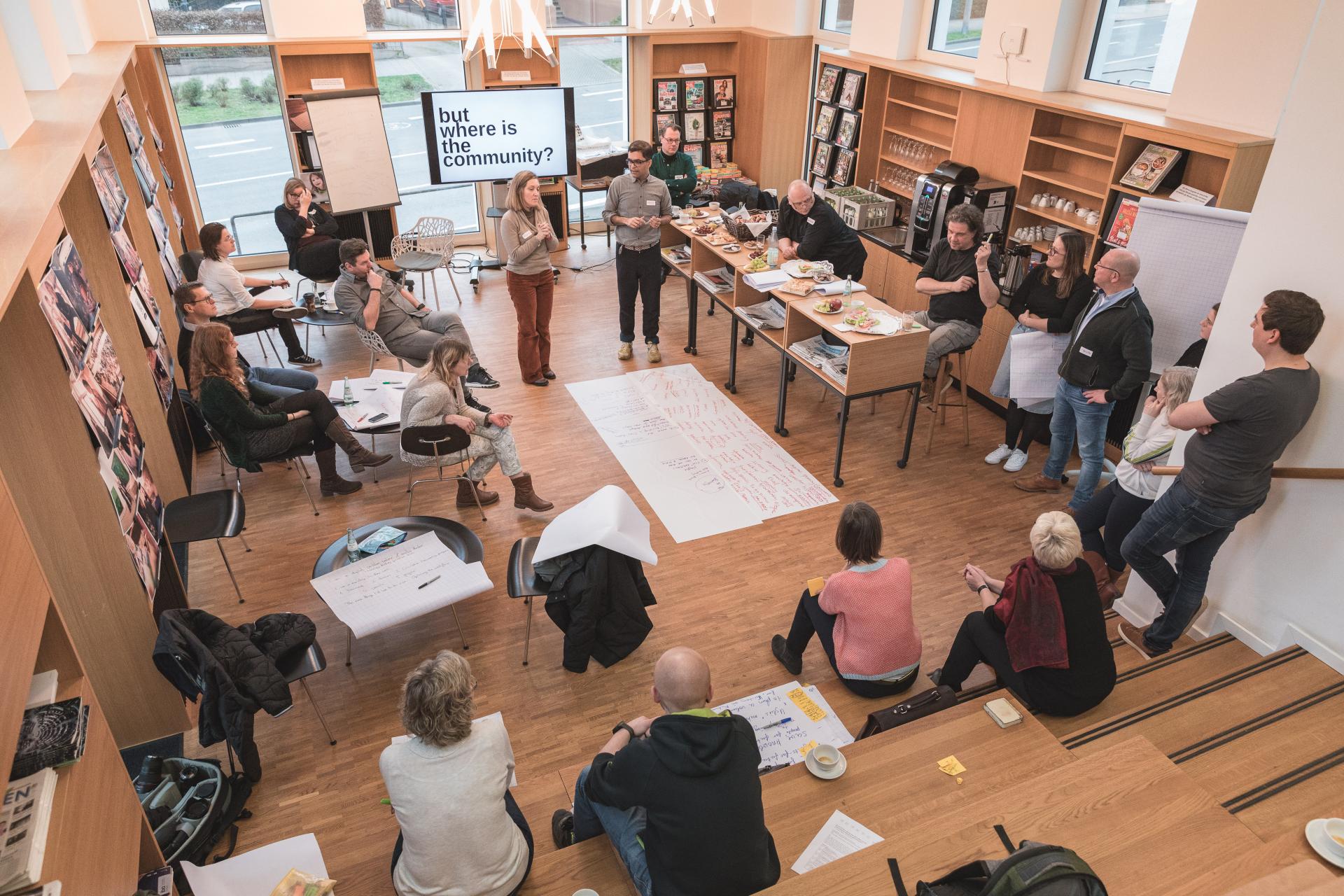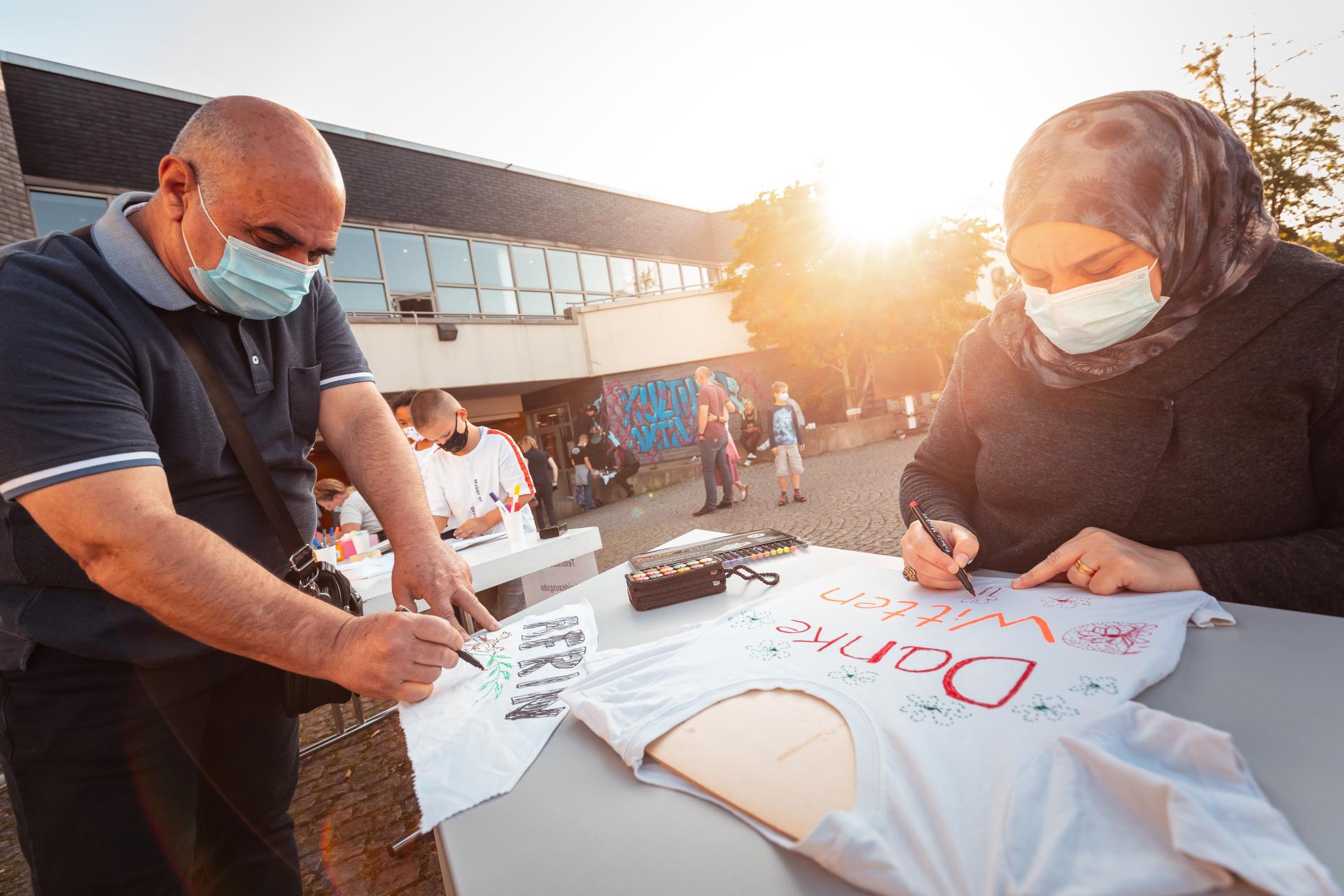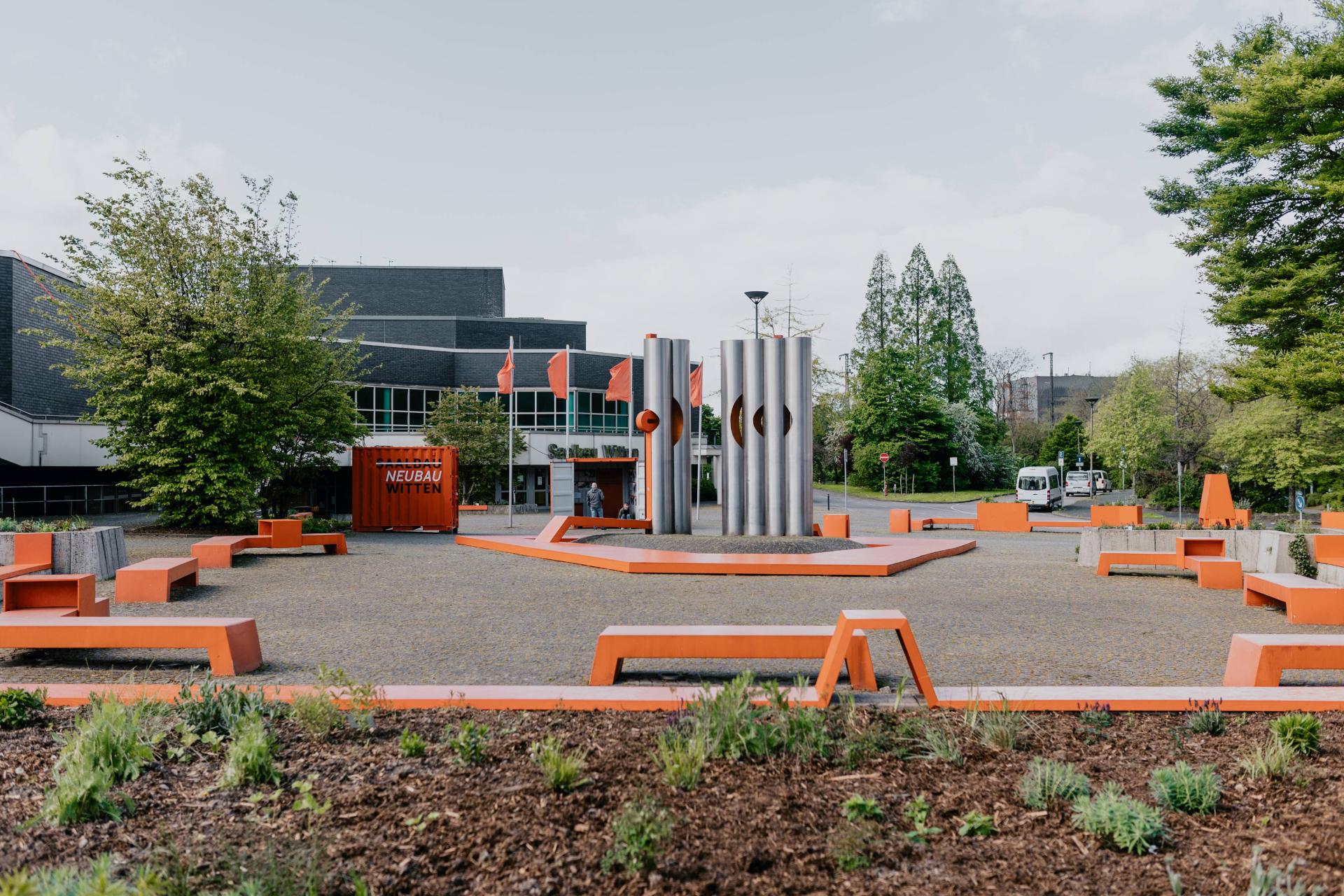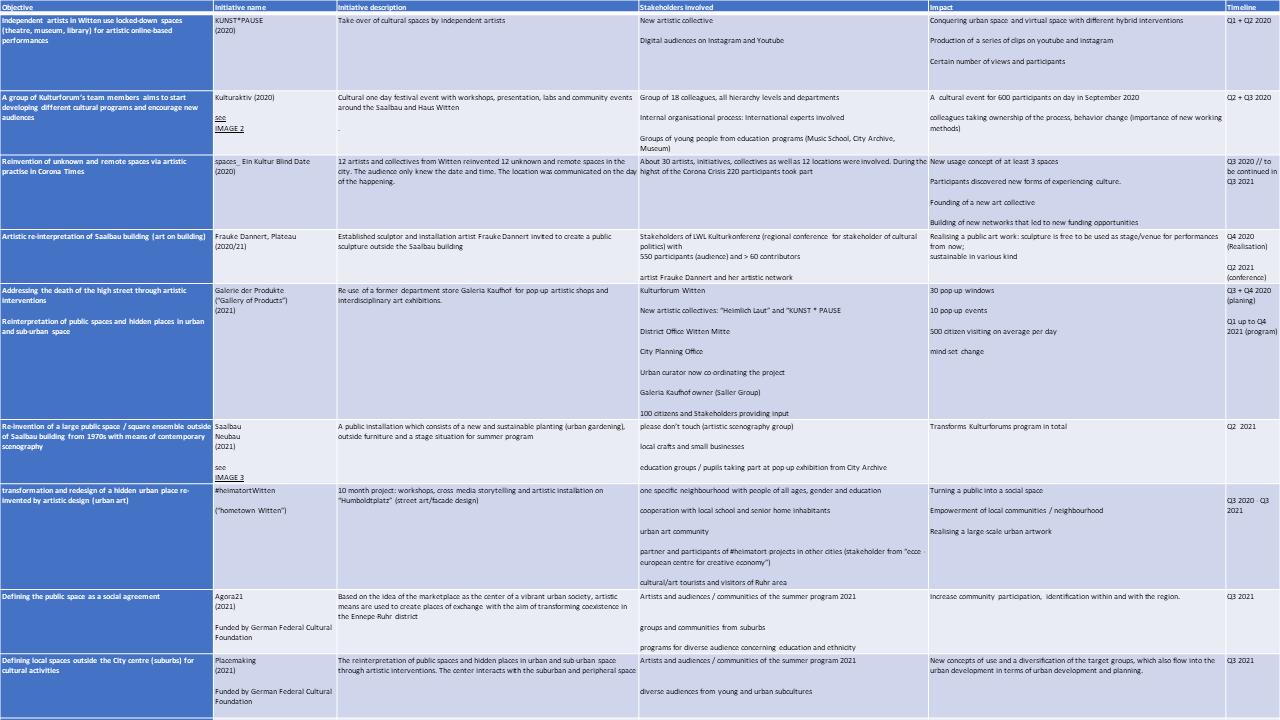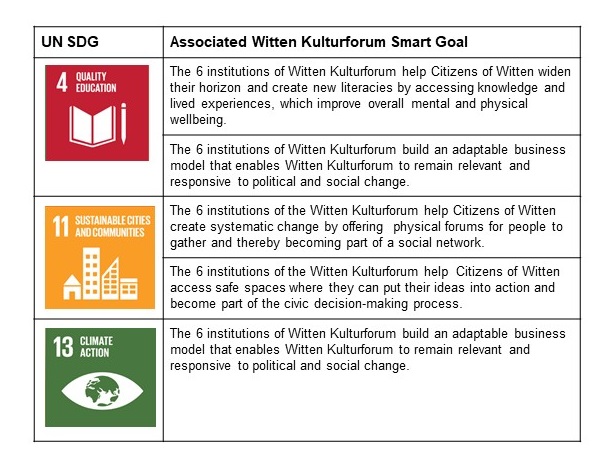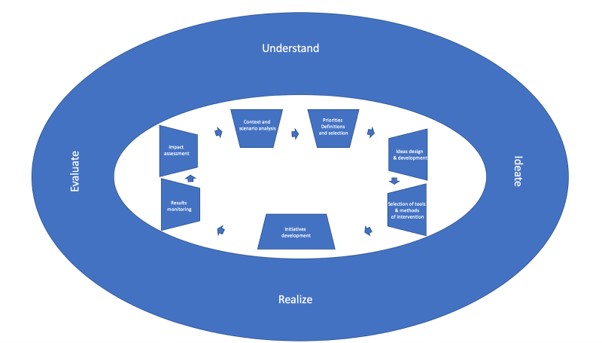Transition
Basic information
Project Title
Full project title
Category
Project Description
TRANSITION is a playful and inviting experimentation of public spaces developed by the Kulturforum Witten (Germany). The 3-year program (20-22) is created within a network of cultural institutions, independent artists and initiatives. We conquer remote, empty and monofunctional places, redefining them via artistic practice and leading therefore to social innovation.TRANSITION is offering diverse communities (esp. vulnerable groups and young adults) ressources and space for cultural participation
Project Region
EU Programme or fund
Description of the project
Summary
TRANSITION is a playful, thoughtful and inviting experimentation of new uses of public space. As a network consisting of cultural institutions, independent artists and various initiatives we want to use the means of artistic practice for social innovation and are aiming to be a catalyst for the social, cultural and digital transformation of the town and the region. TRANSITION is a 3-year program, which started in 2020 and it is aimed at very different target groups, but focuses on vulnerable groups in particular. True to the motto "Take your space, take the future". In the course of this, we conquered remote, empty and monofunctional places and redefined them.
Starting in January 2020 we identified 18 colleagues from different institutions to develop new kinds of cultural interventions. These initiatives were assigned a 6-month timeline and not awarded any external funding. Despite the additional chaos of Corona, we were able to carry out a series of events such as pop-up exhibitions, artistic interventions and participatory events with hundreds of visitors. (Img.1,2)
(see Img. 4: the initiatives that have already taken place and the ones coming up still under ideation and realisation)
6 additional initiatives have already been identified with the communities’ stakeholders for the second part of the year. They range from writing a manifesto about sustainability with focus on cultural practices to the engagement with the cosplay and LARP (live action role play) communities. All the (past and upcoming) TRANSITION initiatives are governed by the Witten sustainable business model, developed in the course of 2020, putting art and culture at the core of building sustainable communities and durable social inclusion, governing the key priorities of the interventions for action via the Witten Kulturforum Smart Objectives linked to specific sustainable development goals and targets. All of them are aligned to the UN SDGs as core and overall framework. (Img. 5,6)
Key objectives for sustainability
As part of the Ruhr Area, Witten faces the challenges of a post-industrial social and economic reality. TRANSITION adresses this by establishing Art & Culture as a key pillar in the long-term social and economic development of the region and its ability to implement a sustainable and environmentally friendly structural change. Therefore, all our operations are in process of being aligned to specific UNSDGs (namely 4, 11 & 13).
Within this framework the TRANSITION initiatives have been designed with a clear mission in mind: to create collaborative laboratories and to establish leadership for sustainable development in civic society through innovative cultural engagement. It aims to close the gap between policy, research and operations. (For the impact see Img. 4)
Those measures of sustainability impact had been identified during the creation of the business plan and in specific they are governed by the Kulturforum SMART Goals. (See Img. 5)
From understanding to evaluating: In the subsequent retrospective of the first process cycle, the teams recognized the immense value in acting collaboratively. With regards to behaviour change, they understood the importance of prototyping and the phase of ideating with a more user-centric, solutions- and system-led approach to problem solving. (long-term perspective: fundamental behavioral change and redefinition of KPIs in business model.)
Our key objectives for 2020/2021:
- Re-conquering 30 urban spaces: 13 projects in 2020 and additionally 17 in 2021 realised
- Creating 15 pop-up events: 5 pop-up events in 2020 and 15 in 2021 will overachieve the target by 5
- Training employees: Capacity building program for more than 20 % in 2020, will be accelerated up to more than 40 % with the 2nd term of program in 2021.
- New public programs during corona: average of 300 participants for a one-day event in 2020 (was overachieved by 50 %). Led to funded summer program in 2021 with a prognose of 15.000 participants in 3 months.
Key objectives for aesthetics and quality
In response to the COVID-19-Crisis, which led to an urgent need from the residents of Witten to be ‘connected’ to each other, we launched a new kind of event series to surprise and delight this community. In the process, we were able to rapidly develop new ways of - redefining public spaces, commissioning talent, co-producing event concepts and adapting our usual production techniques to ensure communities to gather safely. Moving forwards, post-corona, we see these skills will allow us to increase the number of events as well as continue to test new formats with a view on affordability and business development. The development of the initiatives from 2020 to 2021 led therefore to an enhancement of the aesthetics of the spaces and programs. We started with several “experiments” and now the last three initiatives have received federal funding. Following example will demonstrate the approach:
Artistic Intervention: Saalbau // Neubau
Based on the question of how a classic theater can be redefined for the time after the crisis, we created a scenographic intervention on the forecourt. It now became a place of negotiation for a diverse local community about future use. By means of a forecourt installation, both the creation of an ecological garden and the social conversion of the area will be tested. In concrete terms, this means that artistic formats are to be used to develop a future profile for the theater with various groups and their respective perspectives. This means the prelude to further urban planning for the development of the area. Formats: Pop-up exhibitions in open containers with school classes, presentations from the city archive, the cultural office and from students of the University, workshops with children and young people, urban production, theater-pedagogical formats, performances e.g.
See Img. 3
Key objectives for inclusion
We have taken a realistic approach that is based on the demographic profile of Witten, the immediate challenges facing the city and the available resources. Therefore, we have launched a physical space lab. This includes buildings such as the cultural and event centre Saalbau Witten as well as public locations such as the former Galeria Kaufhof. In this way, the space lab through the TRANSITION program is experimenting both with organisational structures in terms of a collaborative reorganisation of Witten cultural institutions, and with public spaces by temporarily redesigning places, fallow land or traffic areas – through, for one, art in practice.
Measures and experiments for reorganising cultural institutions and spaces:
- Collaborative reorganisation of cultural institutions as cultural space labs (e.g. artists in residence, tandem teams, art labs)
- Experiments with spaces through using public spaces as cultural space labs (e.g. open garages, public tables)
- Redesign processes and temporary use of non-spaces and natural spaces as cultural space labs (e.g. pop-up boxes, pop-up workshops, artistic interventions).
Please refer to the STAKEHOLDERS column in the table above that illustrates the INCLUSION impact with an exhaustive list of various communities’ organisations. For instance: We are still processing the data on visitors profiles, but we are seeing that citizens from different etnic and social backgrounds are visiting some of the initiatives. Also on the inclusion impact, the programs have evolved form Y1 to Y2, as we have started tracking specific metrics that consider: gender, sexual orientation, income, age, post code, ethnicity, education. For example, in our digital co-production innovation processes we are already supporting colleagues across the Kulturforum and beyond to tackle the above sensitive issues through their storytelling, education and awareness raising programmes.
Results in relation to category
We have developed a holistic way of working and measuring impact, as illustrated in Img. 4. So far the focus has been more on the HOW rather than the formal evaluation.
Hence why in our IMPACT MEASUREMENT FRAMEWORK illustrated we have implemented the Understand/Ideate/Realise phases.
As part of this cycle the full project team came together in October 2020 to reflect on the entire experiment over the past months. Our focus was on their collaboration (the ‘how’) rather than outcome (the ‘what’). Together we conducted a full “sailboat” design thinking retrospective activity to consider the impact on the citizens of Witten, the new artistic collectives and Witten Kulturforum’s personnel and capture our learnings for the activities coming up. We have identified:
- Which challenges/obstacles we have overcome
- What slowed us down and move us forwards
- Best practice for the future
- Which concrete steps can we as a team take in order to ‘raise the sail’ in the future
This was our first step in creating a blueprint for the impact of art for sustainable community building in Witten, where the cultural sector is developing locally driven participatory approaches to context-specific issues (in specific: involvement of youth population from all ethnicity background, revitalised the centre and bring together town centre and peripheries as connected communities). Many of our colleagues have already internalized this way of working and increasingly we run courageous experiments and new, innovative formats.
The first reheteration of formal evaluation of the overall TRANSITION project components will take place in Q4 2021. The aim is to kick-off a pilot with multidisciplinary experts (e.g. data scientists) to define the tangible social and environmental impact measurements, which can become the standard for cultural-led social impact indicators.
How Citizens benefit
Our business model builds on the concept of local economic districts and therefore we are cultivating an ecosystem of partners from the private, public and educational sector. Also, in order to avoid the usual traps of audience segmentation within the cultural sector (for example, ‘hard to reach communities’ that don't offer granular insight into the reasons residents don’t engage with cultural offerings in their city) we are taking a more tactical approach.
This includes speaking to our frontline services to profile communities who are at risk of social exclusion and isolation. Secondly, looking at vulnerable groups who have accessibility needs. And finally, looking at socio-economic indicators. This allows us to take a user-centric approach to engagement and participation.
For practical examples, when segmenting our residents using socio-economic indicators, we discovered that our minimal entry fee (€5) for the museum is a significant barrier to young families from working class backgrounds. There is a desire to visit these spaces as we already have foot traffic to our library, which is free of cost. Through a process of consultation with these communities we phased out this fee and increased cultural access.
When profiling communities who are at risk of social isolation, we have identified younger people, who lack access to open spaces to socialise. This was particularly heightened during COVID-19. Using a participatory process that included the youth agency the Saalbau intervention (described above) was realised.
Innovative character
COVID-19 has highlighted the cultural sector’s ongoing struggle to evolve in the face of social, political and technological upheaval. At the same time, we are seeing an urgent need for grassroots innovation to engage communities with democracy, global warming and racism. Therefore we believe culture should be at the forefront of driving this innovation. The central narrative for this innovation should be ‘sense-making’. Whereby, the cultural sector offers not just contextual knowledge and information to communities, but also co-produces a blueprint of civic participation with them.
Within in this context and with regards to all our activities, we have developed the following innovations:
- Agile and responsive:
Process: Breaking down traditional institutional hierarchies that exist in German cultural institutions and investing in capacity building programmes across the organisation.
Practical: What we are doing to put this into action is changing the pace at which we operate - producing events, building partnerships and so on.
- New business models:
Process: We are starting to align all our operations to specific UNSDGs and SMART goals. This is to increase our direct impact on societal issues - education, integration and the environment.
Practical: As we clarify our business model, we create new revenue streams and also explore the impact investments to create a ‘startup culture’ for cultural projects in Witten.
- Digital co-production:
Process: We are now using user-centric design principles in all our event planning. This makes us more accessible to the community. It also allows us to adapt our processes in response to the changing needs of our users in a time and cost-effective manner.
Practical: All our cultural events in 2020 exemplify this approach. Especially the fact that we were able to adapt them to the ever changing situation around the Corona Crisis and deliver them with minor delays.

